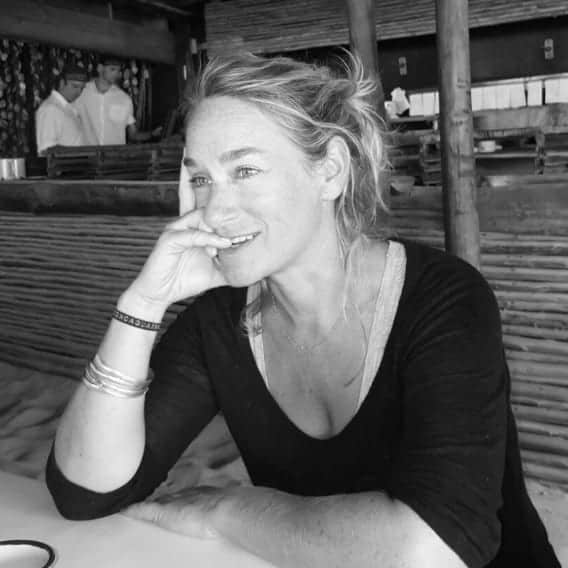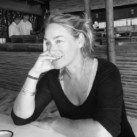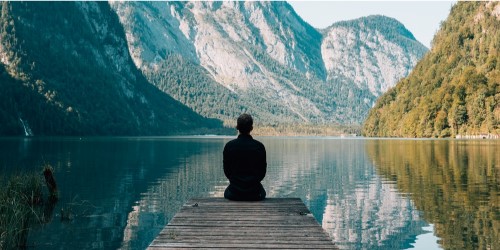
Bruce Fertman is a movement artist and educator with six decades of experience across disciplines such as gymnastics, modern dance, the Alexander Technique, Tai Chi Chu’an, and Zen arts. He is the founder of the Alexander Alliance and the online school Grace of Sense. A published author, Bruce continues to evolve his work through his upcoming book Walking Well and his new program, the WalkingWay, launching in Summer 2024. Bruce features in an exclusive interview with MysticMag.
Bruce, you founded the Alexander Alliance in 1982 and later established Grace of Sense in 2019 as an online community-school. What inspired you to create Grace of Sense, and how does its mission differ from that of the Alexander Alliance?
Grace of Sense began during the COVID pandemic, at a time when I couldn’t travel to my teaching centers in Germany, America, or even attend my own school in Japan—despite being physically present there. Like many others, I had to reimagine what my work could look like in this new reality. So, I turned inward. I began teaching online, but before that took shape, I spent time reflecting and consolidating a half-century of teaching experience.
I wrote a couple of books—unpublished for now—as part of an effort to organize and distill the essence of those fifty years. I needed to make sense of everything I had explored and taught. Each day, I would ride my bicycle to the Yodo River in Osaka, walk for miles, and then sit on low benches to meditate. It became a rhythm: long walks, seated meditation, and then developing a series of movements to awaken my spine, reorganize my arm structure, unblock habitual tension—followed again by meditation. I did this for hours at a time, slowly forming a methodology, especially around the act of walking.
Grace of Sense emerged as something distinct from the Alexander Alliance. When I founded the Alliance, I was firmly rooted in the lineage of the Alexander Technique. My teacher, in fact, was the first person Alexander himself certified to teach, and I was one of her longtime protégés. I felt a deep responsibility to that lineage and spent decades training more than 300 teachers across the world. That was the mission of the Alliance—and it continues to thrive today under the direction of the gifted teachers I mentored in America, Germany, and Japan.
But with Grace of Sense, I didn’t want to confine myself to explaining everything through the lens of the Alexander Technique. Over the years, I had studied and been deeply influenced by many disciplines—Tai Chi (which I’ve practiced for 40 years), Aikido, the Japanese tea ceremony, Argentine tango, modern dance, gymnastics, and extensive work with psychologists, theologians, and spiritual traditions.
Grace of Sense became the container for what I felt were the essential teachings drawn from all of these physical, psychological, and spiritual disciplines. It was an integration of everything I had lived and studied, without needing to fit myself into a particular box.
Over the course of three years, I taught six classes a week online. At times, I had over a hundred students from 27 different countries participating. It was vibrant and exhilarating—truly one of the most creatively fulfilling periods of my life. With Grace of Sense, I found my own original work.
Your work emphasizes the integration of physical and spiritual well-being. Could you elaborate on how Grace of Sense facilitates this interconnectedness for its participants?
During the COVID pandemic, I listened to one of Eckhart Tolle’s recordings. In it, he made a distinction between life and our life situations. That struck me deeply. I sat with that thought for a long time. As I was reviewing over fifty years of teaching, I began to notice that my students—despite being in vastly different life situations, from different countries, cultures, and stages of life—were all grappling with the same essential questions, the same inner disturbances. That realization began to shape something fundamental for me.
It became clear that beneath the diversity of circumstances, we are all influenced by certain constants. Through my work in Grace of Sense, I came to recognize what I now call the Grace of Sense Medicine Wheel. Its more poetic name is The Universal Ever-Present Constants Within Which Our Lives Unfold. These constants are available to all of us, always—twenty-four hours a day, seven days a week. How we relate to these constants, regardless of our specific life situation, determines the quality and texture of our experience. For me, this became the real World Wide Web—not the digital, virtual one, but the living, breathing, ever-present web of reality.
While sharing this insight with my friend David Abram—author of the remarkable The Spell of the Sensuous, which I studied intensively during the pandemic—we realized a shared affinity. David, who has since become a close friend and neighbor, remarked that I was a phenomenologist, someone deeply attuned to the immediacy of lived experience. I agreed, but I added, “I think I’m also a physiologian.” He asked what I meant, and I said, “I’m not a theologian—I don’t conceive of God in the traditional theistic sense—but I am spiritually inclined. I understand the spiritual through the physical. I experience the sacred through the body and the earth. So, I’m more of a physiologian.”
In the same spirit, I sometimes describe myself as a matterist. I believe matter matters. The word ‘matter’ shares a root with ‘mother’. I believe in the Great Mom—the Earth. That’s where I live, where we all live. We are earthlings among countless other earthlings. We live within her troposphere, under her ozone layer. She breathes us, she feeds us. If I were to believe in a god, it would be her—because she is reality.
Spinoza once said, “God is reality.” Einstein agreed. Jung agreed. Byron Katie agrees. So do I. My medicine wheel is not a belief system—it’s a way of naming reality itself. And so, in response to your question about the connection between physical and spiritual grace, I would say: how we relate to the physical world is our spiritual life. When I relate well to this actual, physical world, it feels holy to me.
Let me share some of these constants I’ve discovered over the years. There are ten of them—well, nine really. The first two are gravity and ground. Every moment of every day, we are held by gravity and supported by the ground. And yet, most adults have lost their capacity to relate well to either. They are out of alignment with these forces, and they suffer physically, emotionally, even spiritually as a result. Restoring this relationship is foundational in my work.
Next, we encounter the self. At some point, we become self-aware—we gain a reflective consciousness. It’s as if we are suddenly living with a roommate. That internal dialogue can be nurturing or antagonistic. If these two inner voices are constantly in conflict, we suffer. My work often involves helping people harmonize this relationship—helping the self and the inner self become companions rather than combatants.
Then there is what David Abram calls the more-than-human world. I call it simply the other. This includes not only other people but the so-called ‘inanimate’ world. As a phenomenologist, I choose to experience my world as fully alive. Everything has a kind of nervous system. We’re not just surrounded by things—we’re immersed in a living field of beings. My coffee cup, my home, my tools, my dog—everything participates in the same living web. I sometimes refer to this as my “little body” and the “big body”—all of it, again, part of the Great Mom.
And so, if matter matters, and I am matter, then I matter. And so does everyone else. That’s why I don’t need the supernatural. I experience the natural as super enough. That’s my miracle. I live inside of it every day.
This thread—that the physical and spiritual are not separate but one—has been a central riddle in my life. It began early, during my Jewish training, when I was asked to study other religions. I chose Quakerism and Zen Buddhism. I remember writing a paper on Zen and seeing an image of the Buddha. I was a gymnast at the time, and I marveled at the physical grace of his form—his posture, his alignment, his embodied serenity. But what struck me even more was the expression on his face: total peace. I, on the other hand, was restless—ADHD before it had a name. I remember thinking, What is the connection between this man’s physical presence and his spiritual depth? Is there a connection?
That question has animated my life’s work. It continues to be a thread—no, a lifeline—that guides me, teaches me, and inspires me every day.
In your upcoming book, co-authored with Michael Gelb, titled “Walk – How to Discover Comfort, Vitality, and Inspiration in Every Step,” what are the core principles you aim to convey about the relationship between walking and overall well-being?
For me—and for us—the simplest and most powerful way to feel good physically, mentally, emotionally, and spiritually is to walk. Walking, for those of us fortunate enough to be able to do it, is innate. We didn’t have to learn it the way we learn math or grammar; it’s something our bodies naturally know. And once you truly learn how to walk well—hence the title of the book—your entire being begins to transform. How you walk changes how you feel on every level. The better you walk, the better you feel.
The truth is, most adults don’t walk well. We’ve unknowingly developed habits that interfere with our natural, mammalian way of moving. Over time, these habits disconnect us from the grace and efficiency with which we were designed to walk. What I’ve developed is a methodology to help shed those unnecessary patterns. When those fall away, what’s left is your innate, organic way of walking. To my knowledge, there hasn’t been a book that teaches this—not in a way that reconnects you so directly with your essential design. That’s what inspired me to write it. Michael was deeply interested in the insights I had about walking, and we decided to co-author the book together.
In the book, we explore six distinct kinds of walking. The first is what we call Hatha Walking—walking for health. This is the most common form. People take a walk around the block or in the park to maintain or improve their physical health, and that’s wonderful.
Then there’s what I call Transportal Walking—walking simply to get from point A to point B. It’s so ubiquitous that we hardly notice we’re doing it. We walk from our desks to the kitchen, from our cars into the store, from one room to another. The irony is, while we’re always moving, we’re rarely present with the movement itself. Most of us don’t feel ourselves walking during these transitions. But when you become conscious of this kind of walking, everything changes.
For example, I always park far from the store, just to enjoy the walk. From the moment I step out of my car, I’m aware of how I move. As the supermarket doors slide open, I stay present with each step. Down the aisles, I continue walking well, and by the time I leave, I feel energized—not depleted. Most people feel tired not because of the shopping, but because of the schlepping—the unconscious, inefficient movement. When you walk well, walking doesn’t drain you; it nourishes you.
The next kind is Empathic Walking—what I call walking shoulder to shoulder. This is the kind of walking you do when you want to feel close to someone. Sometimes, when I’m talking with my son face-to-face and things feel a bit misaligned, I’ll suggest we go for a walk. As we find a shared rhythm, our breathing syncs, our stride aligns, and we begin to really listen—not with our eyes, but with our presence. That’s empathic walking. It can also happen in a group—on a protest march, or a pilgrimage. Think of Gandhi’s Salt March. Thousands of people walking shoulder to shoulder, sharing a common heartbeat. It’s incredibly powerful.
Then there is Inspirational Walking. The brain consumes about 20% of our oxygen, and if we’re not walking well, we’re not breathing well. Poor breathing leads to poor thinking. But once we walk well, our breathing improves, oxygen reaches our brain, and suddenly—ideas flow. Clarity emerges. Insight arrives. This kind of walking helps us solve problems and gain perspective. It inspires us, quite literally.
Next is Transformational Walking. This isn’t about generating ideas; it’s about being. It’s not about walking from here to there—it’s about walking from here to fully here. It’s about becoming deeply present, connected to the weight and wonder of your own life. As Mary Oliver wrote, it’s about recognizing that this life is wild and precious—and choosing to be fully awake to it. This kind of walking is akin to a vision quest. It’s a way of pondering: Who am I? How do I want to live? How do I want to be with others?
Finally, there’s Metaphorical Walking. We use the language of walking all the time: Let me walk you through that. Let’s walk our talk. Walk it off. I take that quite literally in my practice. I don’t teach anything I haven’t practiced myself. And what I practice is walking through every interaction—every moment of living—with intention.
We don’t just do things; we interact with them. If I’m washing dishes, I can either rush through it to get to bed, or I can walk through the activity—find the natural tempo that makes the experience feel good. The water feels good, the dishes feel good, and I feel good.
Even in conversation, there is a walking rhythm. If I speak too fast, never pausing, I lose the listener. A good hike includes pauses to admire the view. Similarly, I pause to breathe, to think, to allow space for connection. That, to me, is walking through life—not slipping through it, not dragging, not rushing, but walking—with grace, intention, and awareness.
Grace of Sense offers various programs, including the Walking Way Gatherings in New Mexico. What can participants expect from these gatherings, and how do they complement the online offerings of Grace of Sense?
For about three years during the pandemic, Grace of Sense flourished as a lively online community school. It was a deeply engaging period, connecting people through virtual classes when the world was largely shut down. Now, as we’ve moved into a post-COVID reality, the online school has shifted form. What remains is a more intimate mentorship circle—about 25 students, many of whom have studied with me for three years or more. We meet every three weeks, continuing our shared inquiry and evolution.
I may offer shorter Grace of Sense courses again—five-week sessions, perhaps—but nothing as extensive as the immersive online teaching I was doing during the height of the pandemic. What has really taken root now is Walking Way—a lived, embodied evolution of Grace of Sense. Rather than remaining in the virtual realm, Walking Way brings the teachings into the real world, into the body, and into nature.
There are distinct differences between teaching online and teaching in person. For example, when I lead morning classes, I use my hands quite a bit. Organizing someone in relation to gravity and the ground is no easy feat, and the guidance of skilled touch—taught to me by my teachers in the lineage of F.M. Alexander—can be transformative. It is not just a knowledgeable touch, but also a deeply nourishing one. As adults, many of us receive far less touch than we did as children. Yet, to grow, we need both knowledge and nurturance—and touch can be a powerful medium for both.
This kind of physical interaction, of course, cannot be replicated online. Another major difference is the setting. I take people to extraordinarily beautiful, non-touristy places in Northern New Mexico—landscapes I’ve discovered over the years. Once the senses are open and receptive, I bring people into these natural spaces. There, nature becomes my co-teacher. I don’t need to do much—just let people wander, attune, and absorb until the sun sets. It’s often deeply transformative.
Opening the senses is at the heart of Walking Way. After all, we perceive the world through our senses—without them, we have no real access to experience. I speak of two types: our intra-senses and our inter-senses. The intra-senses include kinesthesia, proprioception, and, to some extent, touch. These inform us about our internal state—whether we’re thirsty, hungry, sad, or angry. We don’t just know these things intellectually; we feel them.
The inter-senses—seeing, hearing, tasting, smelling, and touch—connect us to the world. Touch bridges both realms. We don’t only touch with our hands—our entire body is involved. Right now, as I sit in this chair, the chair touches me just as I touch it. My feet rest on the ground, and the earth meets me there. The world is always in contact with us: wind brushes our skin, air fills our lungs, food enters our bodies. We are in constant, reciprocal relationship with the world.
During Walking Way gatherings, Natasha Mama de Grey, our extraordinary chef, prepares delicious, sensory-awakening meals. From the very first class, I begin re-educating the kinesthetic and proprioceptive senses, and then, when we move outdoors, the seeing and hearing senses awaken. When all of our senses are open simultaneously—receiving together—something profound occurs. There’s a merging of the small body with the vast body of the Earth. Inner and outer become one. The world enters us, and we pour into the world. It’s a deeply alive experience.
This, too, sets Walking Way apart: it happens in true community. While it’s wonderful to connect with people from all over the world via Zoom, to see familiar faces in those little squares, it’s not the same as living together for nine days, sharing three-hour meals each evening. That kind of communion can only happen in person.
Now, we are preparing to take the next step. It’s called The Homestead Project, and it will take two to three years to fully develop. At its heart, it is a life school—a form of alternative higher education that we call Education for Life. We’ll accept only a few students into this three-year program, six months each year. They will live, work, and study here, immersed in the rhythms of the land and the teachings.
Participants will learn to become Alexander Technique teachers, Walking Way teachers, and Grace of Sense teachers. They will learn to cook with the reverence and vitality that Natasha brings, and work with Kyle in landscaping, gardening, woodworking, and sustainable building. They’ll learn to live off the land and off the grid, guided by the values and principles that underlie this entire body of work.
So that’s the evolution—from a child gymnast, to modern dancer, to martial artist, to movement educator, to Grace of Sense teacher, to Walking Way guide, and now to founder of the Homestead Project. I’m only 74, and there’s more to do. I’m grateful every step of the way.
Reflecting on your extensive teaching career, how have you seen the practices taught at Grace of Sense impact individuals’ lives, particularly in terms of movement and personal growth?
What I see, again and again, in those who study with me is a deep shift: they become more peaceful, less conflicted. A sense of poise emerges—comfort, too. Many people begin to work through old injuries or long-held discomfort in their own skin. They learn to respect their bodies, even to love them. There’s a quality of being calmly awake that begins to take root.
People soften and grow stronger at the same time. They become both firm and flexible, stable and mobile. What unfolds is a kind of sensory awakening—a rediscovery of life through the senses. Over time, I see people become less concerned with how their bodies appear, and far more engaged with how their bodies feel and function. They begin to move away from consumerist patterns, away from materialism, and toward something far more grounded and essential.
There’s a quiet joy that comes from that shift. When the senses are truly educated and awake, the simplest experiences bring the greatest pleasure: the warmth of the sun, the beauty of snowfall, the power of wind, the smell of rain on the earth, the shimmer of dew on a spider’s web. Who needs diamonds, really, when the world itself is so exquisitely beautiful? The challenge isn’t the lack of beauty—it’s whether we have the eyes to see it, the senses to receive it.
The value of this work is enormous. I didn’t invent it, of course—it comes through me, passed down from many, many teachers before me. I simply continue the lineage, sharing what I’ve learned and practiced with others.
Now, I realize this wasn’t part of your original question, but after spending a little time looking into your organization and its focus, I feel moved to share a few thoughts on mysticism and mystery.
As an educator, my aim has always been to demystify reality—to help people understand how their bodies function, how the world around them works. And yet, paradoxically, this only deepens my reverence for the mystery of it all. Just the fact that life exists on Earth, and that we are alive to experience it, is an unfathomable mystery. There is so much we will never fully comprehend.
Because of that, I feel it’s essential to demystify what we can—so that we’re not wandering in unnecessary confusion—but without ever losing sight of the profound mystery that infuses all of existence.
Someone once shared something with me that I’ve never forgotten: If you want to understand your past, look at your present. If you want to know your future, look at your present. That struck me as deeply wise.
So when I find myself worrying about the future, or wondering what it will look like, I bring my attention back to the now. How am I living? What am I nurturing? What am I working toward? Or perhaps—what do I claim to want, but am not truly working toward? Because in that case, it likely will not come to pass.
In this way, I try to live practically, with my feet on the ground. I accept that the future is uncertain, mysterious, unknowable. We don’t know how long we’ll live, nor what life holds in store. But we do know what our life is like right now. And how we live now—what we give our attention and energy to—has great influence over what unfolds next.
So for me, it’s about presence. It’s about paying attention to the here and now. That’s where the mystery meets the practical. That’s where life is happening.
If you would like to find out more about Bruce Fertman, please visit https://www.graceofsense.com/



